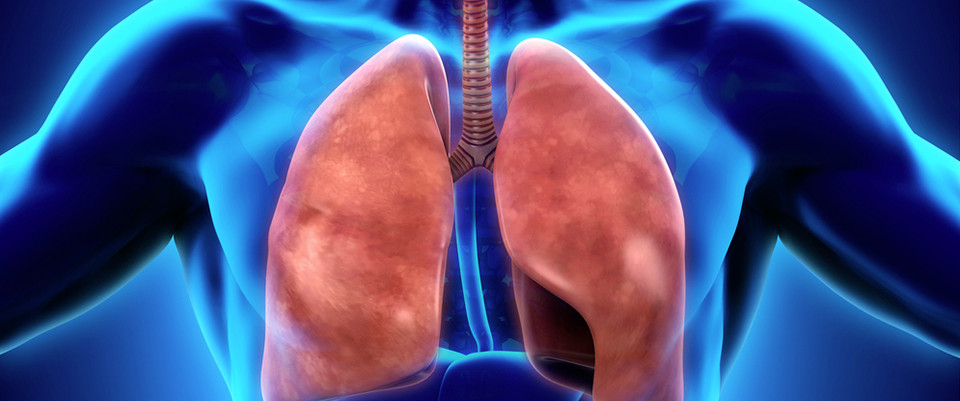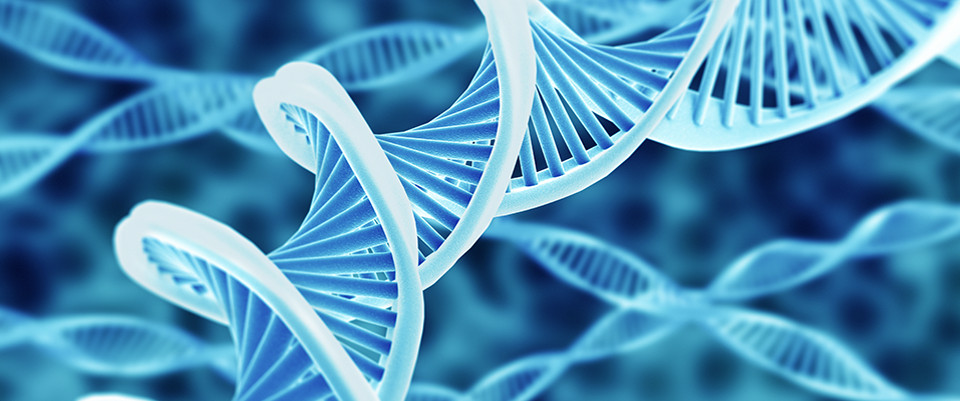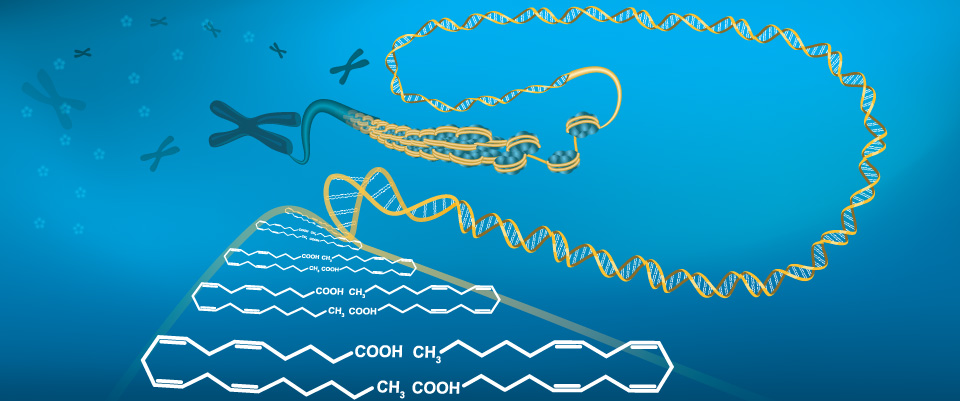PubMed
Comprehensive analysis of morphology, transcriptomics, and metabolomics of banana (Musa spp.) molecular mechanisms related to plant height
Front Plant Sci. 2025 Mar 25;16:1509193. doi: 10.3389/fpls.2025.1509193. eCollection 2025.ABSTRACTINTRODUCTION: Plant height is an important agronomic trait that not only affects crop yield but is also related to crop resistance to abiotic and biotic stresses.METHODS: In this study, we analyzed the differentially expressed genes (DEGs) and differentially accumulated metabolites (DAMs) between Brazilian banana and local dwarf banana (Df19) through transcriptomics and metabolomics, and combined morphological differences and endogenous hormone content to analyze and discuss themolecular mechanisms controlling banana height.RESULTS: Sequencing data showed that a total of 2851 DEGs and 1037 DAMs were detected between Brazilian banana and local dwarf banana (Df19). The main differential biological pathways of DEGs involve plant hormone signaling transduction, Cutin, suberin and wax biosynthesis, phenylpropanoid biosynthesis, mitogen-activated protein kinase (MAPK) signaling pathway in plants, amino sugar and nucleotide sugar metabolism, etc. DAMs were mainly enriched in ATP binding cassette (ABC) transporters, amino and nucleotide sugar metabolism, glycerophospholipid metabolism, lysine degradation, and phenylalanine metabolism.DISCUSSION: Our analysis results indicate that banana plant height is the result of the synergistic effects of hormones such as abscisic acid (ABA), gibberellic acid (GA3), indole-3-acetic acid (IAA), jasmonic acid (JA), brassinosteroids (BR) and other plant hormones related to growth. In addition, transcription factors and ABC transporters may also play important regulatory roles in regulating the height of banana plants.PMID:40201783 | PMC:PMC11975952 | DOI:10.3389/fpls.2025.1509193
Unravel the molecular basis underlying inflorescence color variation in Macadamia based on widely targeted metabolomics
Front Plant Sci. 2025 Mar 25;16:1533187. doi: 10.3389/fpls.2025.1533187. eCollection 2025.ABSTRACTMacadamia integrifolia, a perennial evergreen crop valued for its nutritious nuts, also exhibits a diverse range of inflorescence colors that possess both ornamental and biological significance. Despite the economic importance of macadamia, the molecular mechanisms regulating flower coloration remain understudied. This study employed a combination of metabolomic and biochemical approaches to analyze metabolites present in inflorescences from 11 Macadamia cultivars, representing distinct color phenotypes. A total of 787 metabolites were identified through the use of ultra-high-performance liquid chromatography-tandem mass spectrometry (UPLC-MS/MS), the majority of which were phenolic acids, flavonoids, and flavonols. Principal component analysis and clustering yielded a classification of the samples into three major flower color groups. The differential metabolites were found to be enriched in pathways such as flavonoid, flavonol, and phenylpropanoid biosynthesis, which have been demonstrated to be key contributors to color variation. Moreover, weighted gene co-expression network analysis (WGCNA) identified metabolite modules that were strongly associated with specific flower colors. This revealed that key compounds, including kaempferol, quercetin derivatives, and anthocyanins, were the primary drivers of pigmentation. This study provides a comprehensive framework for understanding the genetic, biochemical, and environmental factors influencing macadamia flower color. These findings contribute to the theoretical understanding of macadamia reproductive biology and have practical implications for molecular breeding, ornamental enhancement, and optimizing pollinator attraction to improve crop yield and ecological sustainability.PMID:40201779 | PMC:PMC11975671 | DOI:10.3389/fpls.2025.1533187
Food colorant brilliant blue causes persistent functional and structural changes in an in vitro simplified microbiota model system
ISME Commun. 2025 Mar 22;5(1):ycaf050. doi: 10.1093/ismeco/ycaf050. eCollection 2025 Jan.ABSTRACTThe human gut microbiota plays a vital role in maintaining host health by acting as a barrier against pathogens, supporting the immune system, and metabolizing complex carbon sources into beneficial compounds such as short-chain fatty acids. Brilliant blue E-133 (BB), is a common food dye that is not absorbed or metabolized by the body, leading to substantial exposure of the gut microbiota. Despite this, its effects on the microbiota are not well-documented. In this study, we cultivated the Simplified Human Microbiota Model (SIHUMIx) in a three-stage in vitro approach (stabilization, exposure, and recovery). Using metaproteomic and metabolomic approaches, we observed significant shifts in microbial composition, including an increase in the relative abundance of Bacteroides thetaiotaomicron and a decrease in beneficial species such as Bifidobacterium longum and Clostridium butyricum. We observed lower protein abundance in energy metabolism, metabolic end products, and particularly lactate and butyrate. Disturbance in key metabolic pathways related to energy production, stress response, and amino acid metabolism were also observed, with some pathways affected independently of bacterial abundance. These functional changes persisted during the recovery phase, indicating that the microbiota did not fully return to its pre-exposure state. Our findings suggest that BB has a lasting impact on gut microbiota structure and function, raising concerns about its widespread use in the food industry. This study underscores the need for further research into the long-term effects of food colorants on the gut microbiota and their potential health implications.PMID:40201425 | PMC:PMC11977461 | DOI:10.1093/ismeco/ycaf050
Mass spectrometry-based metabolomics reveal the effects and potential mechanism of isochlorogenic acid A in MC3T3-E1 cells
Front Mol Biosci. 2025 Mar 25;12:1518873. doi: 10.3389/fmolb.2025.1518873. eCollection 2025.ABSTRACTINTRODUCTION: The bioactive compound 3,5-DiCQA, derived from Duhaldea nervosa, has been traditionally utilized in folk remedies for bone fractures and osteoporosis. However, its therapeutic mechanisms remain unclear.METHODS: We employed UHPLC-Q Exactive Orbitrap MS-based cell metabolomics to investigate the molecular mechanisms of 3,5-DiCQA in MC3T3-E1 cells. Cell proliferation was assessed via MTT assay, differentiation by alkaline phosphatase (ALP) activity, and mineralization through alizarin red staining and cetylpyridinium chloride quantification. Metabolomic profiling compared drug-treated and control groups.RESULTS: Results from MTT assays demonstrated that 3,5-DiCQA significantly promoted cell proliferation at 100 μM. Alkaline phosphatase (ALP) assays and alizarin red staining revealed enhanced osteoblast differentiation and mineralization, respectively. Calcification deposition was significantly increased in the calcified stained cells by cetylpyridinium chloride quantization, indicating that 3,5-DiCQA can promote the mineralization of MC3T3-E1 cells. Metabolomic analysis identified key metabolic changes, including the downregulation of phytosphingosine and upregulation of sphinganine and citric acid.DISCUSSION: These findings suggest that 3,5-DiCQA promotes osteoblast proliferation, differentiation and mineralization through pathways such as sphingolipid metabolism, arginine and proline metabolism, mucin type O-glycan biosynthesis and the citrate cycle (TCA cycle). This study provides insights into the therapeutic potential of 3,5-DiCQA for osteoporosis and highlights the utility of metabolomics in elucidating traditional Chinese medicine (TCM).PMID:40201241 | PMC:PMC11975594 | DOI:10.3389/fmolb.2025.1518873
Advocating the role of trained immunity in the pathogenesis of ME/CFS: a mini review
Front Immunol. 2025 Mar 25;16:1483764. doi: 10.3389/fimmu.2025.1483764. eCollection 2025.ABSTRACTMyalgic encephalomyelitis/chronic fatigue syndrome (ME/CFS) is a complex chronic disease of which the underlying (molecular) mechanisms are mostly unknown. An estimated 0.89% of the global population is affected by ME/CFS. Most patients experience a multitude of symptoms that severely affect their lives. These symptoms include post-exertional malaise, chronic fatigue, sleep disorder, impaired cognitive functions, flu-like symptoms, and chronic immune activation. Therapy focusses on symptom management, as there are no drugs available. Approximately 60% of patients develop ME/CFS following an acute infection. Such a preceding infection may induce a state of trained immunity; defined as acquired, nonspecific, immunological memory of innate immune cells. Trained immune cells undergo long term epigenetic reprogramming, which leads to changes in chromatin accessibility, metabolism, and results in a hyperresponsive phenotype. Initially, trained immunity has only been demonstrated in peripheral blood monocytes and macrophages. However, more recent findings indicate that hematopoietic stem cells in the bone marrow are required for long-term persistence of trained immunity. While trained immunity is beneficial to combat infections, a disproportionate response may cause disease. We hypothesize that pronounced hyperresponsiveness of innate immune cells to stimuli could account for the aberrant activation of various immune pathways, thereby contributing to the pathophysiology of ME/CFS. In this mini review, we elaborate on the concept of trained immunity as a factor involved in the pathogenesis of ME/CFS by presenting evidence from other post-infectious diseases with symptoms that closely resemble those of ME/CFS.PMID:40201181 | PMC:PMC11975576 | DOI:10.3389/fimmu.2025.1483764
Human Schwann Cell-Derived Extracellular Vesicle Isolation, Bioactivity Assessment, and Omics Characterization
Int J Nanomedicine. 2025 Apr 4;20:4123-4144. doi: 10.2147/IJN.S500159. eCollection 2025.ABSTRACTPURPOSE: Schwann cell-derived extracellular vesicles (SCEVs) have demonstrated favorable effects in spinal cord, peripheral nerve, and brain injuries. Herein, a scalable, standardized, and efficient isolation methodology of SCEVs obtaining a high yield with a consistent composition as measured by proteomic, lipidomic, and miRNA analysis of their content is described for future clinical use.METHODS: Human Schwann cells were obtained ethically from nine donors and cultured in a defined growth medium optimized for proliferation. At confluency, the culture was replenished with an isolation medium for 48 hours, then collected and centrifuged sequentially at low and ultra-high speeds to collect purified EVs. The EVs were characterized with mass spectrometry to identify and quantify proteins, lipidomic analysis to assess lipid composition, and next-generation sequencing to confirm miRNA profiles. Each batch of EVs was assessed to ensure their therapeutic potential in promoting neurite outgrowth and cell survival.RESULTS: High yields of SCEVs were consistently obtained with similar comprehensive molecular profiles across samples, indicating the reproducibility and reliability of the isolation method. Bioactivity to increase neurite process growth was confirmed in vitro. The predominance of triacylglycerol and phosphatidylcholine suggested its role in cellular membrane dynamics essential for axon regeneration and inflammation mitigation. Of the 2517 identified proteins, 136 were closely related to nervous system repair and regeneration. A total of 732 miRNAs were cataloged, with the top 30 miRNAs potentially contributing to axon growth, neuroprotection, myelination, angiogenesis, the attenuation of neuroinflammation, and key signaling pathways such as VEGFA-VEGFR2 and PI3K-Akt signaling, which are crucial for nervous system repair.CONCLUSION: The study establishes a robust framework for SCEV isolation and their comprehensive characterization, which is consistent with their therapeutic potential in neurological applications. This work provides a valuable proteomic, lipidomic, and miRNA dataset to inform future advancements in applying SCEV to the experimental treatment of neurological injuries and diseases.PMID:40201152 | PMC:PMC11977562 | DOI:10.2147/IJN.S500159
Mechanistic study of electroacupuncture in the treatment of insomnia: study protocol for a clinical trial of serum metabolomics based on UPLC-Q/TOF-MS and UPLC-QQQ-MS/MS
Front Psychiatry. 2025 Mar 25;16:1499361. doi: 10.3389/fpsyt.2025.1499361. eCollection 2025.ABSTRACTBACKGROUND: Insomnia is the most prevalent sleep disorder worldwide. Electroacupuncture is effective in improving sleep quality, daytime fatigue status, and anxiety and depression in patients with insomnia, and this study aimed to investigate the metabolic pathways and their possible mechanisms in response to the efficacy of electroacupuncture in the treatment of insomnia.METHODS: A single-center, double-blind, clinical trial was the study's design. For this study, a total of 99 participants were enrolled, and they will be split into two groups: one for insomnia and the other for health. There are 33 healthy people in the healthy group and 66 insomnia patients in the insomnia group. Acupuncture treatment will be administered to the intervention group three times a week for four weeks, for a total of twelve treatments, and will be followed up for 3 months. A combination of UPLC-Q/TOF-MS and UPLC-QQQ-MS/MS was used to qualitatively and quantitatively examine the serum of 99 participants. The Pittsburgh Sleep Quality Index (PSQI) and serum metabolomics provided the primary findings. The Insomnia Severity Index (ISI), Hyperarousal Scale (HAS), Fatigue Feverity Scale (FSS), Hamilton Depression Scale (HAMD), Hamilton Anxiety Scale (HAMA), Sleep Diary and The Montreal Cognitive Assessment (MoCA) were the secondary outcomes. For the insomnia group, serum will be collected at baseline, at the end of treatment, and the scale will be collected at baseline, after 4 weeks of treatment, and at 3 months of follow-up. For the healthy group, serum will be collected at baseline.DISCUSSION: This study aimed to assess the modulatory effects of electroacupuncture on relevant metabolic markers using serum metabolomics, to explore the potential mechanisms and relevant metabolic pathways of electroacupuncture for the treatment of insomnia, and to provide strong scientific evidence for the treatment of insomnia by electroacupuncture.TRIAL REGISTRATION: ChiCTR2400085660 (China Clinical Trial Registry, http://www.chictr.org.cn, registered on June 14, 2024).PMID:40201058 | PMC:PMC11975891 | DOI:10.3389/fpsyt.2025.1499361
Evaluation of miR-146a as a potential biomarker for diagnosis of cardiotoxicity induced by chemotherapy in patients with breast cancer
J Res Med Sci. 2025 Jan 30;30:4. doi: 10.4103/jrms.jrms_840_22. eCollection 2025.ABSTRACTBACKGROUND: Cardiotoxicity from chemotherapy may result in cardiomyopathy and heart failure. Clinicians can use the evaluation of cardiotoxicity-specific biomarkers, such as microRNA, as a tool for the early detection of cardiotoxicity. The study's objective was to assess miR-146a levels as a potential biomarker for the detection of cardiotoxicity brought on by chemotherapy in patients with breast cancer.MATERIALS AND METHODS: Using quantitative reverse transcription-polymerase chain reaction, the levels of miR-146a were assessed in the blood of 37 breast cancer patients receiving anthracyclines without cardiotoxicity and 33 breast cancer patients experiencing cardiotoxicity brought on by chemotherapy after chemotherapy. Left ventricular ejection fraction (LVEF) ≥50% was used to define heart failure by echocardiography.RESULTS: MiR-146a did not show any significant difference in expression between these two study groups (P = 0.48, t-test). The expression level of miR-146a was not significantly associated with LVEF, age, and body mass index (P > 0.05), according to Pearson correlation.CONCLUSION: MiR-146a may be a diagnostic or prognostic biomarker for cardiotoxicity brought on by chemotherapy, even though there was no discernible difference in the expression level of miR-146a between the control group and the breast cancer patients who were experiencing this side effect of chemotherapy. Therefore, miR-146a expression needs to be examined in a sizable cohort of breast cancer patients who are experiencing cardiotoxicity brought on by chemotherapy.PMID:40200966 | PMC:PMC11974593 | DOI:10.4103/jrms.jrms_840_22
Optimizing SiO<sub>2</sub> Nanoparticle Structures to Enhance Drought Resistance in Tomato (<em>Solanum lycopersicum</em> L.): Insights into Nanoparticle Dissolution and Plant Stress Response
J Agric Food Chem. 2025 Apr 9. doi: 10.1021/acs.jafc.5c03048. Online ahead of print.ABSTRACTDrought stress significantly limits crop productivity and poses a critical threat to global food security. Silica nanoparticles (SiO2NPs) have shown a potential to mitigate drought stress, but the role of the nanostructure on overall efficacy remains unclear. This study evaluated solid (SSiO2NPs), porous (PSiO2NPs), and hollow (HSiO2NPs) SiO2NPs for their effects on drought-stressed tomatoes (Solanum lycopersicum L.). Silicic acid release rates followed the order: HSiO2NPs > PSiO2NPs > SSiO2NPs > Bulk-SiO2. Compared to untreated controls, foliar application of PSiO2NPs and HSiO2NPs under drought stress significantly improved shoot Si concentrations and plants' dry weight. These treatments also enhanced antioxidant enzyme activities (catalase, peroxidase, and superoxide dismutase) and phytohormone-targeted metabolome levels (jasmonic acid, salicylic acid, and auxin), contributing to greater drought tolerance. Conversely, SSiO2NPs, silicic acid, and Bulk-SiO2 had minimal impact on plant dry weight or physiological responses. These results highlight the importance of nanoparticles architecture in alleviating drought stress and promoting sustainable agriculture.PMID:40200726 | DOI:10.1021/acs.jafc.5c03048
Single-Dose, Intravenous, and Oral Pharmacokinetics of Isavuconazole in Dogs
J Vet Pharmacol Ther. 2025 Apr 8. doi: 10.1111/jvp.13510. Online ahead of print.ABSTRACTIsavuconazole, a triazole antifungal used in humans for invasive fungal infections, may be effective for treating canine fungal infections, although data on its use in dogs is limited. This study aimed to determine the pharmacokinetics and safety of a single dose of isavuconazole in dogs, administered both intravenously and orally. Six healthy dogs received 186 mg isavuconazonium sulfate in a crossover design, with blood samples collected over 28 days and an 8-week washout period. Plasma isavuconazole and isavuconazonium concentrations were measured by liquid chromatography/mass spectrometry, and pharmacokinetic parameters were determined by non-compartmental analysis. Isavuconazole was well tolerated, with key findings including intravenous clearance at 350 ± 112 mL/kg/h, volume of distribution at steady state at 9.8 ± 4.5 L/kg, and a terminal half-life of 90 ± 44 h. For oral administration, the maximum concentration was 0.60 ± 0.27 μg/mL, time to maximum concentration was 6.73 ± 2.45 h, terminal half-life was 125 ± 80 h, and the area under the curve was 7.44 ± 2.39 μg h/mL. Oral bioavailability was 81.4% ± 12.8%. These results suggest isavuconazole has a long half-life in dogs and is well absorbed orally when administered in the fasted state. Further studies are warranted to establish a therapeutic regimen in dogs.PMID:40200720 | DOI:10.1111/jvp.13510
Chirality Quantification for High-Performance Nanophotonic Biosensors
Small Methods. 2025 Apr 8:e2500112. doi: 10.1002/smtd.202500112. Online ahead of print.ABSTRACTRecent advancements in chiral metabolomics have facilitated the discovery of disease biomarkers through the enantioselective measurement of metabolites, offering new opportunities for diagnosis, prognosis, and personalized medicine. Although chiral photonic nanomaterials have emerged as promising platforms for chiral biosensing, enhancing sensitivity and enabling the detection of biomolecules at extremely low concentrations, a deeper understanding of the relationship between structural and optical chirality is crucial for optimizing these platforms. This perspective examines recent methods for quantifying chirality, including the Hausdorff Chirality Measure (HCM), Continuous Chirality Measure (CCM), Osipov-Pickup-Dunmur (OPD), and Graph-Theoretical Chirality (GTC) measure. These approaches have advanced the understanding of chirality in both materials and biomolecules, as well as its correlation with optical responses. This work emphasizes the role of chiral quantification in improving biosensor performance and explores the potential of near-field chiroptical studies to enhance sensor capabilities. Finally, this work addresses key challenges and outline future research directions for advancing chiral biosensors, with a focus on improving nano-bio interface interactions to drive the development of next-generation sensing technologies.PMID:40200644 | DOI:10.1002/smtd.202500112
Identification of Diagnostic Biomarkers for Colorectal Polyps Based on Noninvasive Urinary Metabolite Screening and Construction of a Nomogram
Cancer Med. 2025 Apr;14(7):e70762. doi: 10.1002/cam4.70762.ABSTRACTPURPOSE/BACKGROUNDS: Colorectal polyps (CRPs) are precursors to colorectal cancer (CRC), and early detection is crucial for prevention. Traditional diagnostic methods are invasive, prompting a need for noninvasive biomarkers. This study aimed to identify urinary metabolite biomarkers for diagnosing CRPs and construct a diagnostic nomogram based on noninvasive urinary metabolite screening.PATIENTS AND METHODS: A total of 192 participants, including 64 CRP patients and 128 healthy controls, were recruited. Urine samples were analyzed using untargeted gas chromatography-mass spectrometry (GC-MS) and ultra-performance liquid chromatography-mass spectrometry (UPLC-MS). Metabolite screening was performed using weighted gene coexpression network analysis (WGCNA), least absolute shrinkage and selection operator (LASSO), and support vector machine-recursive feature elimination (SVM-RFE). A diagnostic nomogram was developed based on identified metabolites, and its performance was evaluated using receiver operating characteristic (ROC) curves, calibration plots, and decision curve analysis (DCA).RESULTS: A total of 350 metabolites were identified, with 7 key metabolites significantly associated with CRP. Multivariate logistic regression analysis identified Saccharin (OR = 48.3, 95% CI: 4.44-525.32) and N-omega-acetylhistamine (OR = 27.91, 95% CI: 2.31-337.06) as significant risk factors for CRP, while N-methyl-L-proline, trimethylsilyl ester (OR = 0.08, 95% CI: 0.01-0.8) was a protective factor. A nomogram incorporating these metabolites demonstrated strong discriminatory power, with AUC values of 0.974 and 0.960 in the training and validation sets, respectively. Calibration plots and DCA confirmed the model's accuracy and clinical utility.CONCLUSIONS: This study successfully identified seven urinary metabolites as potential noninvasive biomarkers for CRP. The constructed diagnostic nomogram, based on these metabolites, offers high predictive accuracy and clinical applicability, providing a promising tool for the early detection of CRP.PMID:40200572 | DOI:10.1002/cam4.70762
Mechanisms of Baicalin Alleviates Intestinal Inflammation: Role of M1 Macrophage Polarization and Lactobacillus amylovorus
Adv Sci (Weinh). 2025 Apr 8:e2415948. doi: 10.1002/advs.202415948. Online ahead of print.ABSTRACTBaicalin has been widely used for its anti-inflammatory pharmacological properties, yet its effects on bacterial intestinal inflammation and the mechanisms remain unclear. This study revealed that baicalin alleviates bacterial intestinal inflammation through regulating macrophage polarization and increasing Lactobacillus amylovorus abundance in colon. Specifically, transcriptomic analysis showed that baicalin restored Escherichia coli-induced genes expression changes including T helper cell 17 differentiation-related genes, macrophage polarization related genes, and TLR/IRF/STAT signaling pathway. Subsequent microbial and non-targeted metabolomic analysis revealed that these changes may be related to the enhancement of Lactobacillus amylovorus and the upregulation of its metabolites including chrysin, lactic acid, and indoles. Furthermore, whole-genome sequencing of Lactobacillus amylovorus provided insights into its functional potential and metabolic annotations. Lactobacillus amylovorus supplementation alleviates Escherichia coli-induced intestinal inflammation in mice and similarly inhibited M1 macrophage polarization through TLR4/IRF/STAT pathway. Additionally, baicalin, Lactobacillus amylovorus, or chrysin alone could regulate macrophage polarization, highlighting their independent anti-inflammatory potential. Notably, this study revealed that baicalin alleviates intestinal inflammation through TLR4/IRF/STAT pathway and increasing Lactobacillus amylovorus abundance and the synthesis of chrysin. These findings provide new insights into the therapeutic potential of baicalin and Lactobacillus amylovorus in preventing and treating intestinal inflammation, offering key targets for future interventions.PMID:40200426 | DOI:10.1002/advs.202415948
Multi-Omic Evaluation of PLK1 Inhibitor-Onvansertib-In Colorectal Cancer Spheroids
J Mass Spectrom. 2025 May;60(5):e5137. doi: 10.1002/jms.5137.ABSTRACTPolo-like kinase 1 (Plk1) is a serine/threonine kinase involved in regulating the cell cycle. It is activated by aurora kinase B along with the cofactors Borealin, INCE, and survivin. Plk1 is involved in the development of resistances to chemotherapeutics such as doxorubicin, Taxol, and gemcitabine. It has been shown that patients with higher levels of Plk1 have lower survival rates. Onvansertib is a competitive ATP inhibitor for Plk1 in clinical trials for the treatment of tumors and has recently entered a trial for the treatment of KRAS mutant colorectal cancers (CRCs). In this study, we conducted an untargeted liquid chromatography-mass spectrometry (LC-MS) proteomics study as well as an untargeted lipidomics analysis of HCT 116 spheroids treated with onvansertib over a 72-h treatment time-course experiment. Mass spectrometry imaging (MSI) showed that onvansertib begins to accumulate most prominently after 12 h of treatment and continues to accumulate through 72 h. Proteomic results displayed alterations to cell cycle control proteins and an increasing abundance of aurora kinase B and Borealin. The proteomics data also showed alterations to many lipid metabolism enzymes. The MSI lipidomics data indicated alterations to phosphatidylcholine lipids, with many lipids increasing in abundance over time or increasing until 12 h of onvansertib treatment and decreasing after that time point. In summary, these results suggest that onvansertib is causing cells within the spheroid to halt at a certain phase of the cell cycle in accordance with previous literature. Our findings suggest the S phase is likely interrupted, with observed alterations in cell cycle control proteins and PC lipid abundance.PMID:40197665 | PMC:PMC11976698 | DOI:10.1002/jms.5137
Comprehensive analysis of transcriptome and metabolome identified the key gene networks regulating fruit length in melon
BMC Plant Biol. 2025 Apr 8;25(1):442. doi: 10.1186/s12870-025-06332-0.ABSTRACTBACKGROUND: Melon is an ideal crop model for studying fruit development. Fruit shape is an important quality trait, and fruit length is a key indicator affecting fruit shape. However, studies on the genes regulating melon fruit length are still limited.RESULTS: In this study, we investigated the gene network regulating fruit morphology in melons utilizing transcriptome profile and a co-expression pattern-based approach. Four co-expression modules/gene networks highly correlated with changes in endogenous plant hormone levels at different developmental stages were identified. We pinpointed 11 key genes associated with cell development, 4 genes related to microtubule development, and 16 genes involved in the auxin (IAA, indole-3-acetic acid) pathway. These genes were identified as module hubs, and their expression level correlated with phenotypic variation. Through rigorous screening methods, we enhanced the likelihood that these genes are genuine candidates in the regulation of the fruit morphology network. These genes play a significant role in controlling fruit length, providing crucial insights into the molecular mechanisms underlying melon fruit development.CONCLUSIONS: Our findings revealed candidate genes that regulate melon fruit length, helping in the understanding of the molecular mechanisms underlying melon fruit development. These genes will be valuable for implementing marker-assisted breeding strategies.PMID:40200143 | DOI:10.1186/s12870-025-06332-0
A multi-omics analysis reveals candidate genes for Cd tolerance in Paspalum vaginatum
BMC Plant Biol. 2025 Apr 8;25(1):441. doi: 10.1186/s12870-025-06478-x.ABSTRACTCadmium (Cd) pollution in the farmland has become a serious global issue threatening both human health and plant biomass production. Seashore paspalum (Paspalum vaginatum Sw.), a halophytic turfgrass, has been recognized as a Cd-tolerant species. However, the underlying genetic basis of natural variations in Cd tolerance still remains unknown. This study is possibly the first to apply genome-wide association studies (GWAS) and selective sweep analysis to identify potential Cd stress-responsive genes in P. vaginatum. We identified a total of 89 candidate genes and 656 putative selective sweeps regions. Based on the correlation analysis of differentially expressed metabolites (DEMs) and differentially expressed genes (DEGs), we identified the 55 key genes associated with metabolic changes induced by Cd treatment as the Cd tolerance-related genes. These genes showed significantly higher expression in Cd-tolerant accessions as compared to Cd-susceptive accessions. Therefore, our multi-omics study revealed the molecular and genetic basis of Cd tolerance, which may help develop Cd tolerant crop varieties.PMID:40200134 | DOI:10.1186/s12870-025-06478-x
Metabolic diseases in the East Asian populations
Nat Rev Gastroenterol Hepatol. 2025 Apr 8. doi: 10.1038/s41575-025-01058-8. Online ahead of print.ABSTRACTEast Asian populations, which account for approximately 20% of the global population, have become central to the worldwide rise of metabolic diseases over the past few decades. The prevalence of metabolic disorders, including type 2 diabetes mellitus, hypertension and metabolic dysfunction-associated steatotic liver disease, has escalated sharply, contributing to a substantial burden of complications such as cardiovascular disease, chronic kidney disease, cancer and increased mortality. This concerning trend is primarily driven by a combination of genetic predisposition, unique fat distribution patterns and rapidly changing lifestyle factors, including urbanization and the adoption of Westernized dietary habits. Current advances in genomics, proteomics, metabolomics and microbiome research have provided new insights into the biological mechanisms that might contribute to the heightened susceptibility of East Asian populations to metabolic diseases. This Review synthesizes epidemiological data, risk factors and biomarkers to provide an overview of how metabolic diseases are reshaping public health in East Asia and offers insights into biological and societal drivers to guide effective, region-specific strategies.PMID:40200111 | DOI:10.1038/s41575-025-01058-8
Microbiome-metabolome dynamics associated with impaired glucose control and responses to lifestyle changes
Nat Med. 2025 Apr 8. doi: 10.1038/s41591-025-03642-6. Online ahead of print.ABSTRACTType 2 diabetes (T2D) is a complex disease shaped by genetic and environmental factors, including the gut microbiome. Recent research revealed pathophysiological heterogeneity and distinct subgroups in both T2D and prediabetes, prompting exploration of personalized risk factors. Using metabolomics in two Swedish cohorts (n = 1,167), we identified over 500 blood metabolites associated with impaired glucose control, with approximately one-third linked to an altered gut microbiome. Our findings identified metabolic disruptions in microbiome-metabolome dynamics as potential mediators of compromised glucose homeostasis, as illustrated by the potential interactions between Hominifimenecus microfluidus and Blautia wexlerae via hippurate. Short-term lifestyle changes, for example, diet and exercise, modulated microbiome-associated metabolites in a lifestyle-specific manner. This study suggests that the microbiome-metabolome axis is a modifiable target for T2D management, with optimal health benefits achievable through a combination of lifestyle modifications.PMID:40200054 | DOI:10.1038/s41591-025-03642-6
Effects of planting patterns on physicochemical properties, metabolites and microbial community structure of rhizosphere soil in perennial cultivated grassland
Sci Rep. 2025 Apr 8;15(1):12047. doi: 10.1038/s41598-025-94366-7.ABSTRACTEstablishing perennial cultivated grasslands on the Qinghai-Tibet Plateau helps address the seasonal imbalance of forage resources and supports the restoration of degraded grasslands. The most common planting patterns-monocropping and mixed cropping-are well-studied in terms of vegetation structure, productivity, and soil nutrients. Despite their significance, the influence of prolonged planting practices on underground soil microbial communities and metabolites has often been neglected. In this study, two characteristic plants, Festuca sinensis 'Qinghai' and Poa pratensis 'Qinghai', from the area around Qinghai Lake were selected as the experimental subjects by employing 16 S and ITS sequencing methods in conjunction with non-targeted metabolomics analysis. The effects of planting patterns (monocropping and mixed cropping) on rhizosphere soil characteristics, metabolites and microbial community structure were examined. The results showed that compared with monocropping, mixed cropping significantly increased the contents of soil nutrients and key metabolites. In addition, it had a greater impact on fungal diversity than bacterial diversity, particularly in terms of β-diversity. While microbial α-diversity and dominant phyla remained stable, soil fungi were more responsive to changes in soil properties and metabolites. These results show that the new niche differentiation between different species in mixed grassland stimulates the secretion of trehalose and valine, which further affects the fungal community structure and enhances the soil nutrients and ecological functions of degraded grasslands. These findings will guide the restoration of degraded grasslands around Qinghai Lake and the selection of planting strategies to improve local sustainable grassland productivity.PMID:40199986 | DOI:10.1038/s41598-025-94366-7
Effect of faecal microbial transplantation on clinical outcome, faecal microbiota and metabolome in dogs with chronic enteropathy refractory to diet
Sci Rep. 2025 Apr 8;15(1):11957. doi: 10.1038/s41598-025-96906-7.ABSTRACTChronic enteropathy (CE) is a common complaint in canine gastroenterology. Recently, faecal microbiota transplantation (FMT) gained attention as a treatment strategy. However, the efficacy and long-term impact of FMT is still unclear. Clinical index (CIBDAI), faecal microbiota and metabolome were monitored in 20 CE dogs refractory to diet before (T0) and 3 months (T3) after FMT. Further data were retrospectively collected up to 1-year after FMT. Significant improvements were observed in CIBDAI, Dysbiosis Index (DI), and primary (PBAs) and secondary (SBAs) faecal bile acids and propionate one month (T1) after FMT (CIBDAI (median and range): T0 5 (1-9) vs. T1 1 (0-5), p < 0.0001; DI (median and range): T0 -0.1 (-5.6 to 3.8) vs. T1 -2.1 (-5.7 to 4.7), p < 0.05; PBAs decreased by 57%, SBAa increased by 41%; propionate increased by 20%). According to CIBDAI, 17 dogs clinically improved up to T3, and 10 dogs remained clinically stable up to one year after FMT. Alpha- and beta-diversity of the faecal microbiota of CE dogs did not differ, neither before nor after FMT, from that of 17 healthy controls. The results highlight that CE dogs refractory to diet with mild clinical signs and dysbiosis may benefit long-term from treatment with FMT.PMID:40199985 | DOI:10.1038/s41598-025-96906-7











